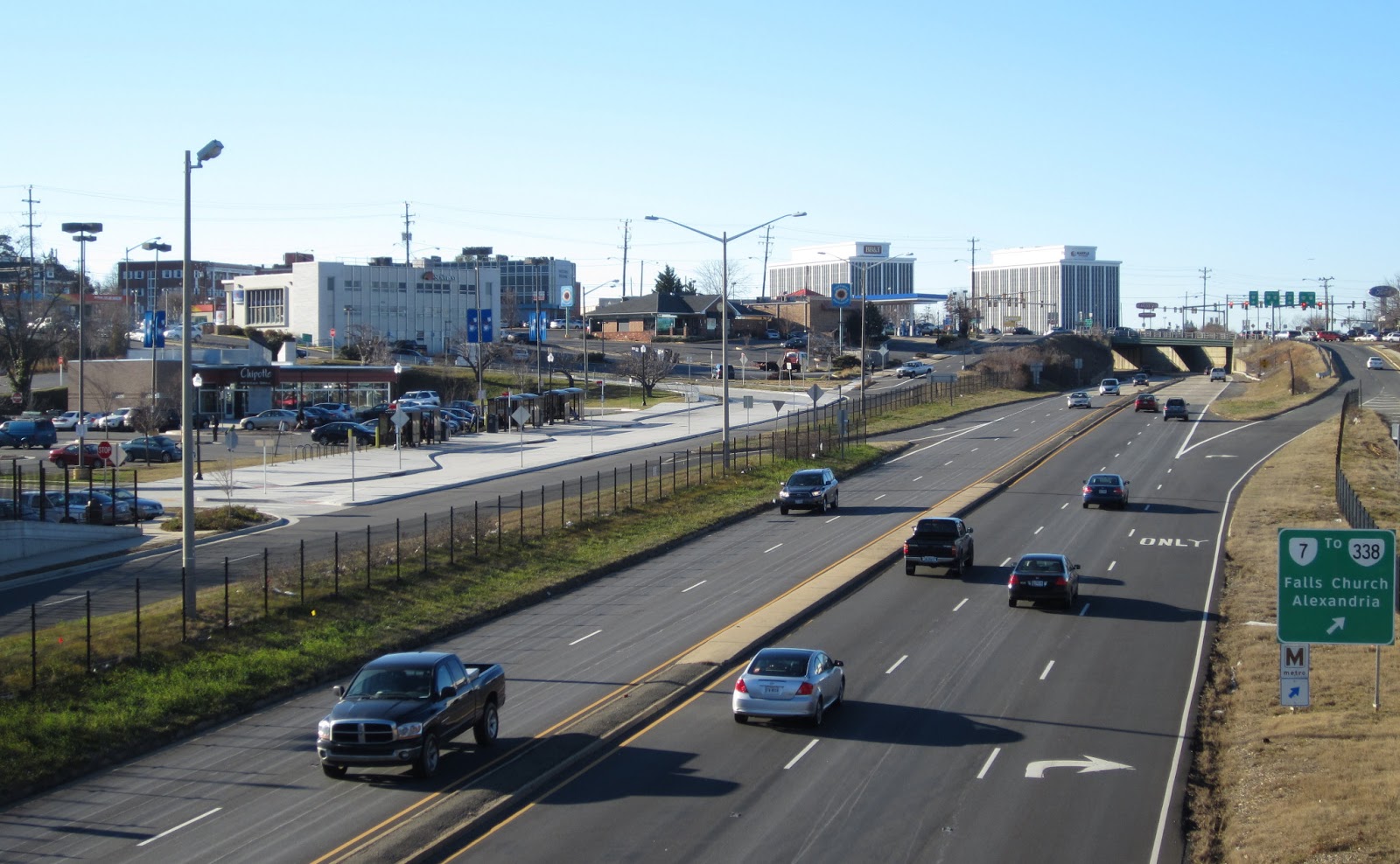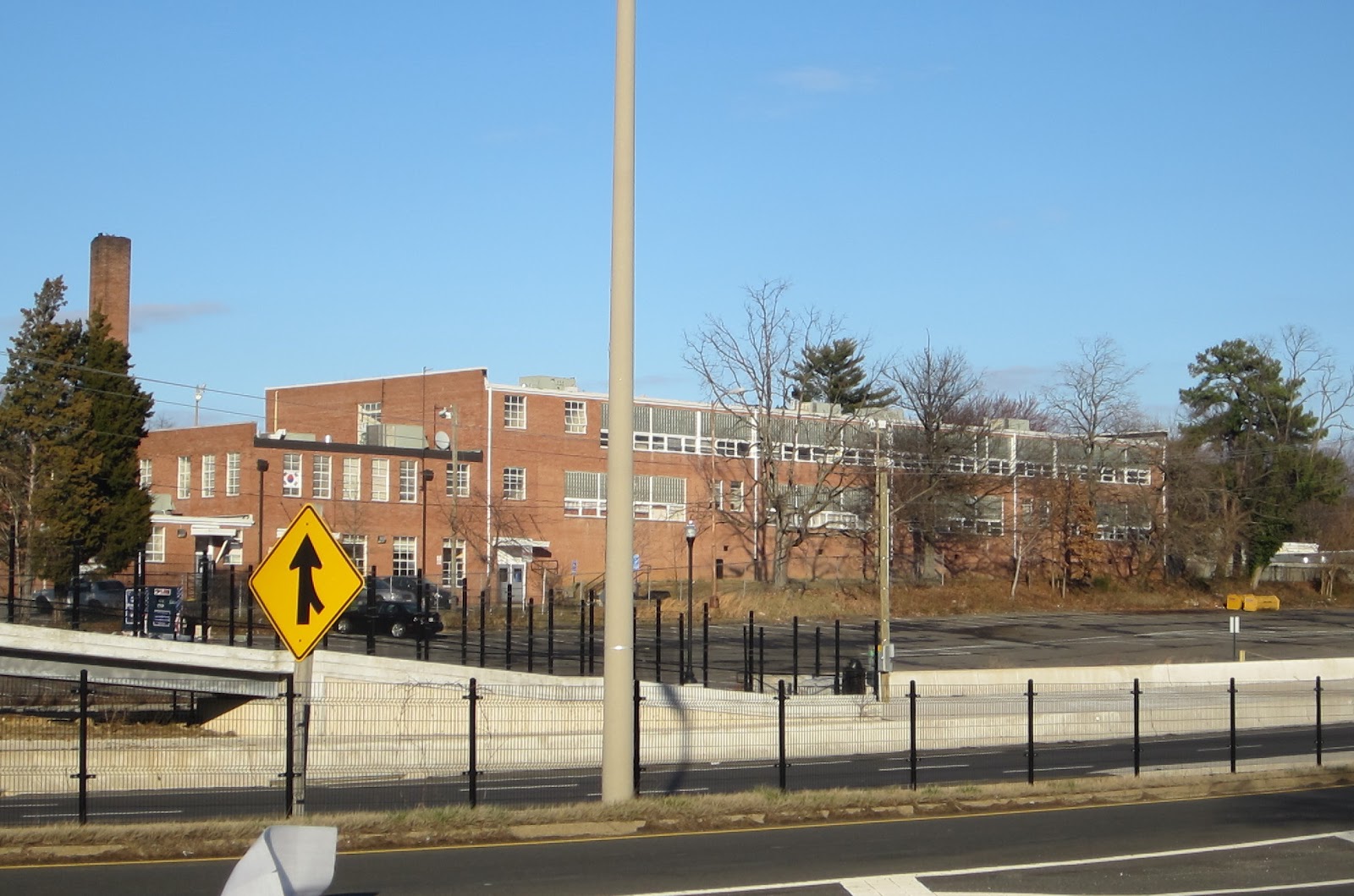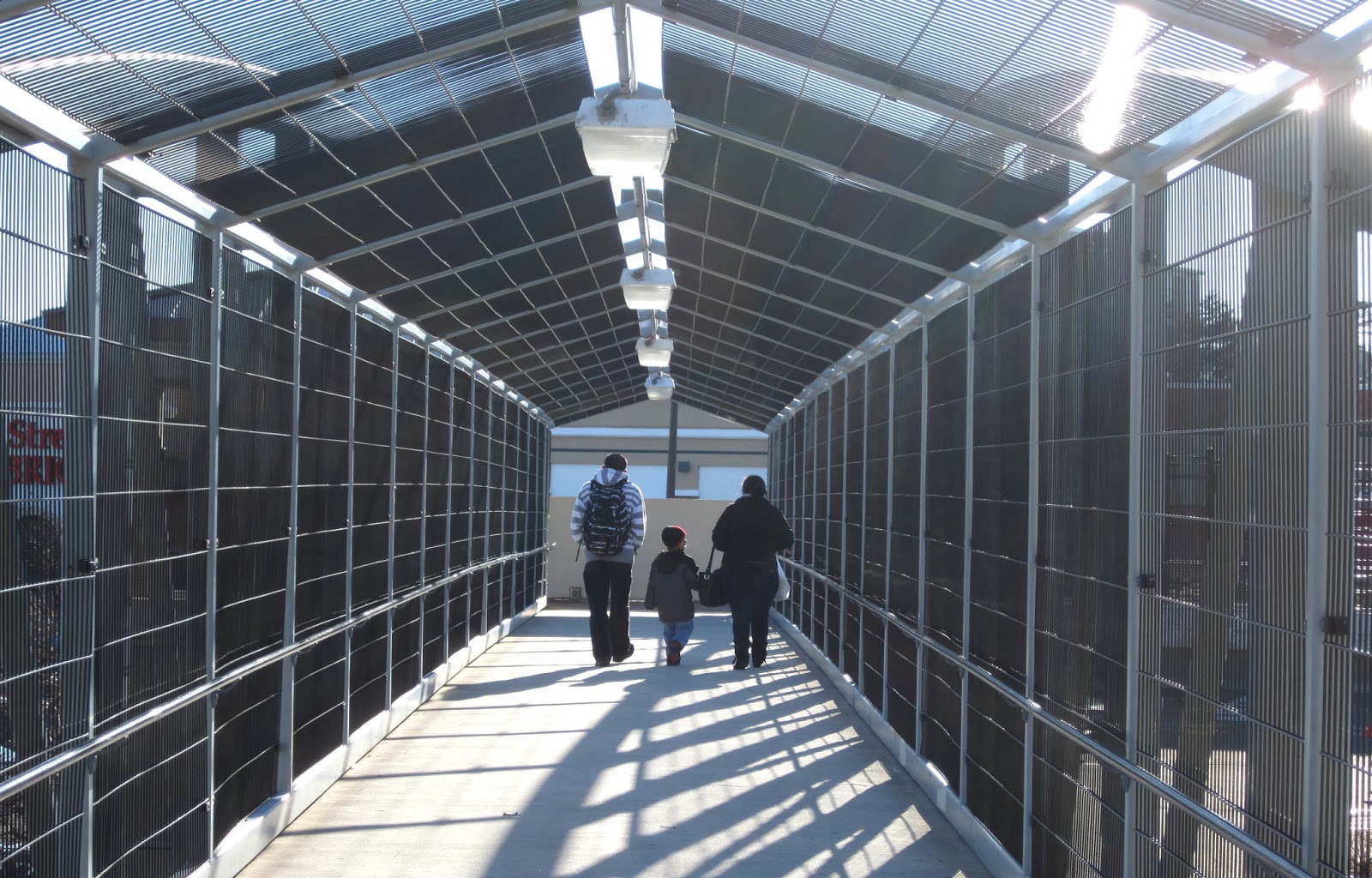Seven Corners working groups present reports to Land Use Task Force
 |
| Route 50 as seen from the pedestrian bridge. |
The short-term working groups addressing connectivity and quality of life issues presented their recommendations to the Seven Corners Land Use and Transportation Task Force March 12.
The Connectivity Working Group focused on short-improvements to make the Seven Corners area easier to navigate by pedestrians and bicyclists.
Rick Cheston outlined a series of recommendations, including more crosswalks to help people safely get across Leesburg Pike and Arlington Boulevard, continuous sidewalks throughout the area, a safer path across the Leesburg Pike overpass at Arlington Boulevard, shade trees at the bus transit center, and more bus shelters. He said only eight bus stops in the area have covered shelters, none of them in the Willston area.
 |
| The Willston Center. |
Cheston said Fairfax County transportation planners are also working on improvements to the main Seven Corners intersection, other efforts to improve pedestrian safety, new sidewalks, and new bus shelters, but there are no specifics.
Ben Cooper, another member of that group, proposed additional improvements to make the area safer for bicyclists, including better road markings and shared bike/car lanes on Sleepy Hollow Road and in the service lanes on Route 7 and Route 50. He also called for better signage to let people know about the stairway that connects the upper and lower levels of the Seven Corners Shopping Center.
The only place in the area with bike racks is the bus transit center at the Seven Corners shopping center, he said, so more bike racks are needed in other locations.
Mike Cook, of the Quality of Life Working Group, said the pedestrian bridge over Route 50 needs better lighting and maintenance.
He also called for improved maintenance at the Willston Multicultural Center, which “has been deteriorating steadily.” He said the “county has been disinvesting” in the building, and people who work there are hearing “wild rumors all the time and are very concerned about its future.”
 |
| Loitering in the Seven Corners Shopping Center parking lot. |
According to Cook, there’s been “zero maintenance” on the soccer field and it has become a “cesspool,” and the parking lot is a “total eyesore.” Inside the Willston Center, the HVAC system isn’t functioning well, so people have to wear coats inside, the windows are leaking, there are burned-out lights, and the rugs are 20 or 30 years old.
Nancy Vorona, another member of the Quality of Life Working Group, outlined four key concerns—illegal signs, litter, loitering, and panhandlers—and said the solution is “proactive code enforcement.”
A major problem, according to Vorona, is the county’s policy of prohibiting code enforcement personnel from “initiating corrective action against violators.” Instead, she said, “a member of the community must lodge a complaint for county staff to take action.”
She urged that policy to be changed to authorize county staff to enforce the laws against littering and illegal signs. She applauded the Fairfax County Board of Supervisors for signing an agreement with the Virginia Department of Transportation that allows the county to remove signs from VDOT rights of way and urged the county to pick up litter at the same time.
 |
| The pedestrian bridge. |
Vorona and Kay Cooper, who also serves on the Quality of Life Working Group, have been pushing the county for months to do something about the signs and litter all over Seven Corners. The VDOT agreement is a positive step, Cooper said, but it is discouraging that the county won’t impose fines on businesses that put up illegal signs. She suggested the county launch an anti-litter education campaign, an idea also pushed by the Mason District Council of Community Associations.
Vorona urged the county to crack down on loitering and panhandling, which “create the impression that the environment is not safe or wholesome” and discourage people from patronizing businesses in Seven Corners.
According to Vorona, Seven Corners won’t be improved unless steps are taken to “build a sense of community,” which could include the establishment of a chamber of commerce. She said the Bailey’s Crossroads Revitalization Corporation is interested in working on this.
“It’s depressing that Seven Corners has been neglected for so long,” said Carol Turner, another member of the working group. She called for better landscaping, public art, and improvements to the pedestrian bridge and bus shelters.
After the two working groups gave their presentations, Land Use and Transportation Task Force co-chair John Thillman, vice president at Landmark Atlantic, said the group needs to develop “planning principles” to guide its work as it gets into the details of land use at Seven Corners.
Thillman said he likes the form-based redevelopment concept approved for Annandale, which establishes design guidelines for buildings and streetscapes and encourages mixed-use projects by giving developers more flexibility than conventional FAR-based (floor area ratio) zoning. “That’s the direction I see us moving,” he said.
Also at the meeting, Leila Gordon, chair of the countywide Arts Plan Task Force, and Linda Sullivan, executive director of the Arts Council of Fairfax County, encouraged the Seven Corners Task Force to incorporate public art into its redevelopment proposals.


Great job volunteers!
Why arent we talking of the WaPost article on the segregation amongst Va. schools, in particular hispanic kids, and that was 2010 numbers. After the Democrats redistricted AHS and removed a large percentage of the middle class kids in 2010 and then again in 2012 it is hard to believe they have the best interests of the remaining students at heart. A more sinister viewpoint is that they are building a nice future constituency of people that will be dependent on their handouts for years to come, thus entrenching their positions as elected officials. The Republicans on the other hand passed No Child Left Behind, a legitimate attempt to force localities to properly educate minority groups and sub-groups, giving them upward mobility.